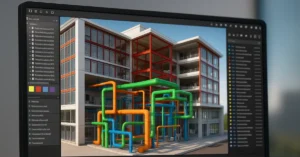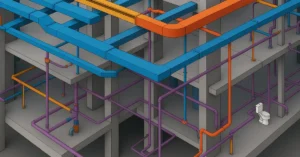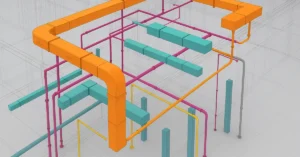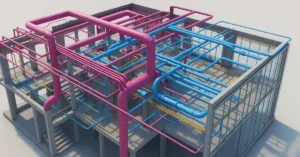A Deep Dive into Brutalist Buildings in Marseille
Brutalist buildings in Marseille may not always make the top of architectural travel lists, but for those who admire bold lines, raw concrete, and powerful geometric forms, this French Mediterranean city offers some exceptional gems. With a blend of sunlit coastlines and gritty urban textures, Marseille sets the perfect backdrop for Brutalism to reveal its raw beauty and influence. From iconic housing projects to civic buildings and cultural institutions, Brutalism in Marseille remains a strong and often overlooked part of the city’s architectural identity.
What is Brutalist Architecture?
Brutalist architecture is a style that emerged after World War II, peaking in popularity between the 1950s and 1970s. Characterized by its massive scale, unadorned surfaces, and heavy use of concrete (béton brut in French), Brutalism represents a stark, honest aesthetic rooted in modernism. Far from being purely utilitarian, Brutalist buildings often exhibit complex geometries and dramatic sculptural qualities.
In France, and particularly in Marseille, Brutalism took on a unique identity. The influence of visionaries like Le Corbusier, who pioneered both modernism and Brutalist concepts, left an indelible mark on the city.
Unmissable Brutalist Buildings in Marseille
1. Unité d’Habitation by Le Corbusier
Location: Boulevard Michelet, 13008 Marseille
Architect: Le Corbusier
Year: 1952
Often called the “Cité Radieuse” or Radiant City, this is arguably the most famous Brutalist structure in Marseille, and one of the most influential buildings of the 20th century. Designed by Le Corbusier, the Unité d’Habitation was a revolutionary approach to urban living. It comprises 337 duplex apartments, a hotel, a rooftop terrace with a running track, and even shops within the building.
Constructed entirely from rough-cast concrete, the building’s grid-like façade and modular design showcase the principles of Brutalism and Le Corbusier’s utopian vision. Its influence has extended to public housing projects around the world.
2. Conseil Régional Provence-Alpes-Côte d’Azur (PACA Regional Council Building)
Location: 27 Place Jules Guesde, 13002 Marseille
Architect: Architecture Studio
Year: 1980s
This lesser-known but formidable building stands out for its commanding presence and extensive use of concrete. With massive vertical fins and an uncompromising façade, it reflects Brutalism’s stern functionality. Though softened by newer developments in the area, the structure remains a potent example of institutional Brutalist design in Marseille.
3. Maison du Foyer Protestant
Location: 16 Rue Grignan, 13001 Marseille
Architect: Unknown
Year: 1960s
A community center and worship space, the Maison du Foyer Protestant incorporates Brutalist elements with its bare concrete walls, linear design, and minimalist aesthetic. Though small in scale compared to other structures, it represents Brutalism’s ability to blend function and austerity in community-oriented architecture.
4. Saint-Joseph Church (L’église Saint-Joseph)
Location: Rue Paradis, 13006 Marseille
Architect: Fernand Pouillon (in later renovations)
Year: Original church 19th century, Brutalist renovations mid-20th century
While originally a Neo-Romanesque church, modern renovations in the mid-20th century introduced Brutalist features. The use of exposed concrete and geometric forms in structural additions and surrounding buildings creates a dramatic contrast with its older elements, giving it a layered architectural narrative.
5. Lycée Victor Hugo Extension
Location: 2 Place Victor Hugo, 13003 Marseille
Architect: Guy Rottier
Year: 1970s
This educational facility extension reflects Brutalism’s reach into public institutions. Its design features chunky proportions, recessed windows, and unfinished textures that align with the movement’s functionalist roots. It embodies how Brutalism was used to convey permanence and authority, especially in educational architecture.
Brutalism in Marseille: Cultural and Historical Context
Marseille’s embrace of Brutalism was driven by post-war reconstruction, modernization, and a desire to express a new civic identity. The city faced a pressing need for housing and public infrastructure after WWII. The French government’s push for functional, rapid construction found a match in Brutalist methods.
Le Corbusier’s presence in Marseille set a precedent. His Unité d’Habitation was more than just a building—it was a manifesto. It proposed how people could live collectively in a vertical city, with access to amenities and green space. The social ideals behind this movement were appealing in a city marked by economic inequality and urban sprawl.
Why Marseille’s Brutalism Stands Out
Unlike colder, grayer environments where Brutalism often feels oppressive, Marseille’s sunlight and coastal setting interact with concrete in unique ways. The texture of raw concrete glows warmly under the Mediterranean sun. The boldness of the forms is softened by nature, giving Brutalist structures in Marseille an aesthetic appeal not often found elsewhere.
Brutalism here also tells a story of social progress, urban challenges, and architectural daring. It represents both hope and controversy, much like the city itself.
Public Perception and Criticism
As in many cities, Brutalist buildings in Marseille have faced mixed reviews. Some residents find them harsh, dated, or unwelcoming. Others admire their clarity, strength, and unapologetic modernity. Recently, there has been a shift towards preservation and appreciation, particularly of Le Corbusier’s work, which has achieved UNESCO World Heritage status.
Urban renewal has occasionally threatened Brutalist structures, but growing awareness of their cultural significance has prompted architects, historians, and civic groups to advocate for restoration rather than demolition.
Preservation Efforts and Brutalism’s Future in Marseille
The French Ministry of Culture and local heritage organizations have started cataloging significant Brutalist structures. Le Corbusier’s Unité d’Habitation was officially listed as a historical monument in 1986 and later inscribed as a UNESCO World Heritage Site in 2016.
Ongoing interest in mid-century modernism and Brutalism has sparked discussions about restoring other buildings, integrating them better with modern developments, and reusing them in innovative ways. From urban housing to creative workspaces, Brutalist buildings offer versatile spaces that continue to inspire architects and designers.
Experiencing Brutalist Architecture in Marseille
Whether you’re visiting Marseille or living there, exploring its Brutalist architecture offers a new lens through which to experience the city. A walking or biking tour can take you from the iconic Cité Radieuse to hidden gems like educational institutions and civic centers. Along the way, you’ll see how concrete, sunlight, and purpose come together in dramatic forms.
Bring a camera, a sketchpad, or simply an open mind. Appreciate the texture of concrete, the rhythm of geometric lines, and the courage of a generation that dared to redefine beauty.
Conclusion: The Enduring Appeal of Brutalism in Marseille
Brutalist buildings in Marseille are more than relics of a bygone era. They are living monuments to a time when architecture was about vision, progress, and radical honesty. Whether you find them impressive or intimidating, they demand attention and provoke thought.
In a city known for its diversity, history, and resilience, these concrete giants reflect Marseille’s bold spirit. As Brutalism continues to be re-evaluated by new generations, Marseille stands as one of its most authentic and fascinating showcases. If you have yet to explore these architectural powerhouses, now is the perfect time to discover the beauty in the raw.
If you’re interested in learning more about architecture firms in Europe, check out this comprehensive list of the top 50 firms compiled by Archgyan. From innovative startups to long-established industry leaders, this list has it all. Take a look and discover some of the most inspiring and influential architecture firms in Europe today.
If you’re interested in architecture and want to learn more about this amazing field, subscribe to our podcast on youtube
For more SketchUp tutorials, head to https://www.sketchupguru.com










